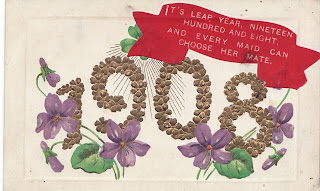
Dennis was surprised to see the wet, dead leaves again the window of the restaurant's window. Two days here in Panajachel, and he had seen few places that were not carefully swept, albeit usually by hand held whisk brooms.
He whispered the name of restaurant --
El Fantasma del Hermano Ernesto. He wanted to be haunted by the ghost of Brother Ernesto, whoever he was, instead of the usual ghosts that seemed to fill his dreams the past three to four years. His mother had been dead for ten years, but rarely was there not a night when she was not there in his dream.
Last night he had the most recurring dream of traveling with his mother.
Midway through a long international flight she turned to him and asked, "How much longer until we reach Cincinatti, Dennis?"
"We're not going to Cincinnati, Mother."
"What's the name of that lovely place by the river? I hope we can go there for tea before we go to the hotel. What's the name of it again?"
"We're going to Nagaland, Mother."
"Nagaland...that's just before the river isn't it?"
"No, Mother. Nagaland. You remember."
"Oh, dear, should I have packed my passport?"
Just then Dennis' tea arrived and he looked out across the crystal blue waters of Lake Atitlan. Oolong always calmed him, while chamomile upset his stomach and kept him up all night. His mother, on the other hand, drank cups of chamomile as a sleep aid.
Dennis saw another batch of leaves, wet in the wind dance to the window and cling for a moment and then slither downwards.
He thought of the other dream where his mother was visiting his office on the 63rd floor.
"Mother, we've got to dash. The building is on fire."
"Oh, just a moment, Dennis. Let me grab a few things and I'll meet you by the elevator in a few minutes."
"Mother, the building is on FIRE! We can't take the elevator."
"Okay, then, just don't make me run too fast down the stairs."
"We have to go now. The building is on FIRE."
"Okay, but let me find the lady's room first. I took my diuretic about 30 minutes ago."
Dennis pressed the warm tea cup against his cheek, trying to picture Hermano Ernesto, trying to imagine what it would be like to travel iwth him or get caught in a fire. He closed his eyes to take him away from his usual nightmares. He opened his eyes and saw a flurry of even more leaves, so brilliantly colored and dancing with such vigor as they danced freely on the invisible dancefloor of the wind.
Labels: Magpie Tales
 I have a pretty hefty collection of photos I took in and around Oklahoma City from the 1970s and 1980s that I've been trying to pull together. This one, oddly, has always fascinated me. It's such an amazing sign. And I greatly appreciate that it's a parlour not a parlor. I remember this place from my childhood and know that it was there well into the 1980s but am fairly certain it is long gone. I don't get to Oklahoma very often, but I know there were a number of curious attractions like this one that made an impression on me during my impressionable years. For some reason, poodles have been coming up a lot lately in my life.
I have a pretty hefty collection of photos I took in and around Oklahoma City from the 1970s and 1980s that I've been trying to pull together. This one, oddly, has always fascinated me. It's such an amazing sign. And I greatly appreciate that it's a parlour not a parlor. I remember this place from my childhood and know that it was there well into the 1980s but am fairly certain it is long gone. I don't get to Oklahoma very often, but I know there were a number of curious attractions like this one that made an impression on me during my impressionable years. For some reason, poodles have been coming up a lot lately in my life.

















































